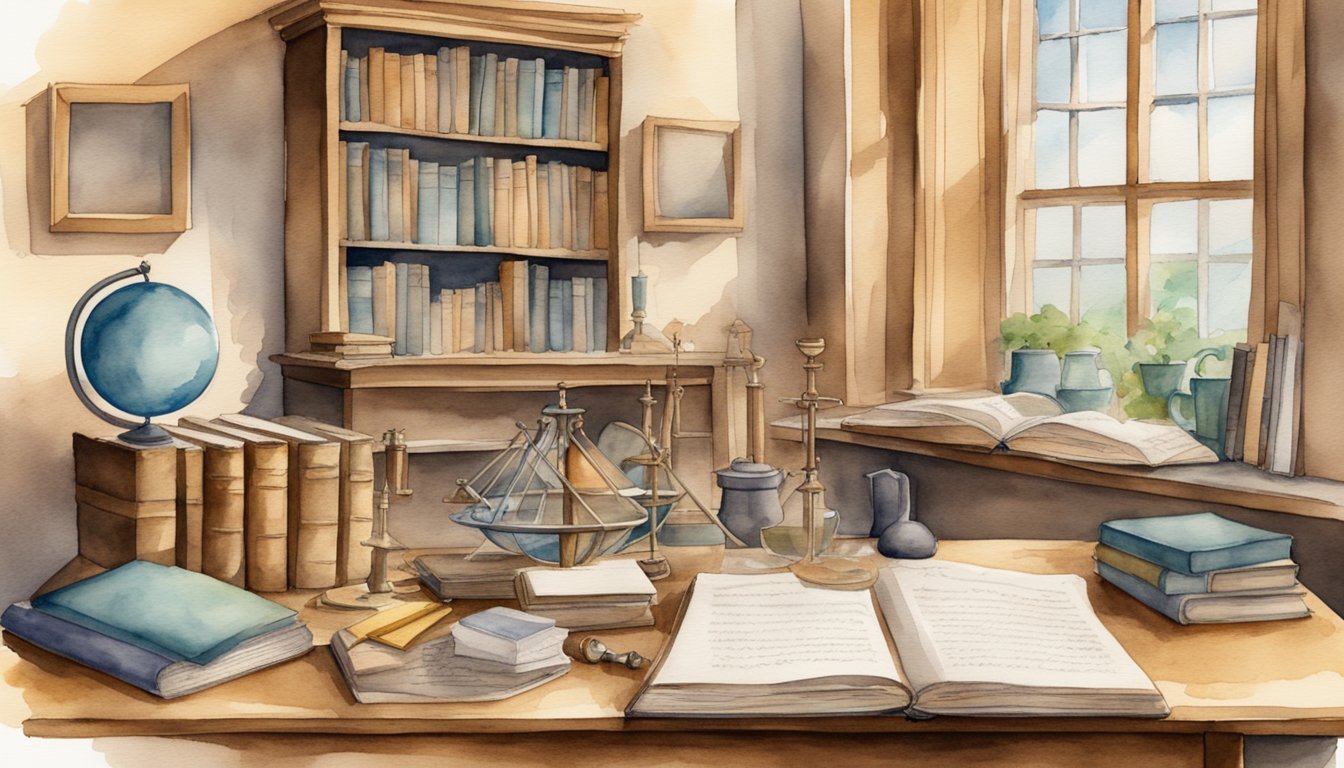Early Life and Education of Isaac Newton

Isaac Newton’s journey began in a small hamlet in Lincolnshire where overcoming a premature birth set the stage for his remarkable contributions to science and mathematics.
Childhood and Family Background
Isaac Newton was born on January 4, 1643, in Woolsthorpe, Lincolnshire, England. His father, also named Isaac Newton, was a farmer and passed away three months prior to his birth. Newton’s premature birth raised doubts about his survival, yet he would grow to become one of history’s most influential scientists. He was raised by his maternal grandmother after his mother remarried a man named Barnabas Smith, leaving young Isaac in the care of his maternal family for a number of years.
Academic Pursuits at Cambridge
In 1661, Newton started his education at Cambridge University, enrolling as a student at Trinity College. He worked as a servant to pay for his schooling in these early days, performing menial tasks for wealthier students. His academic potential quickly became evident, as he immersed himself in the works of modern philosophers. His time at Cambridge was transformational, sowing the seeds for what would be a series of profound discoveries in mathematics and natural philosophy.
Key Contributions and Discoveries
Sir Isaac Newton’s legacy as a key figure in the Scientific Revolution is marked by groundbreaking advancements in physics and mathematics, which have profoundly shaped our understanding of the universe.
Revolution in Physics and Mathematics
Sir Isaac Newton revolutionized physics with his formulation of the three laws of motion, which laid the groundwork for classical mechanics. These laws describe the relationship between a body and the forces acting upon it, laying the framework for much of modern engineering and physics. Newton’s law of universal gravitation was a monumental stride in physics, proposing that every particle attracts every other particle in the universe with a force directly proportional to the product of their masses and inversely proportional to the square of the distance between their centers. In addition to physics, Newton co-developed infinitesimal calculus, a field of mathematics vital to understanding change and motion, concurrently with German mathematician Gottfried Leibniz.
Literary Works and Leadership Roles
Newton was not just a scientist but also an author, and his Philosophiæ Naturalis Principia Mathematica, often shortened to the Principia, remains one of the most important works in the history of science. In this work, he details not only his laws of motion and theory of gravitation but also his method of fluxions, which we recognize today as calculus. Newton’s influence also extended to his role at the Royal Society, where he served as president for over two decades until his death. His contributions to this institution helped shape the scientific community’s approach to research and collaboration. Furthermore, Newton’s appointment as the Master of the Mint and his subsequent knighthood by Queen Anne are a testament to his influence and leadership beyond the realm of academia. Newton’s varied endeavors demonstrate his profound impact on not just science but also the infrastructure of society and its currency.

